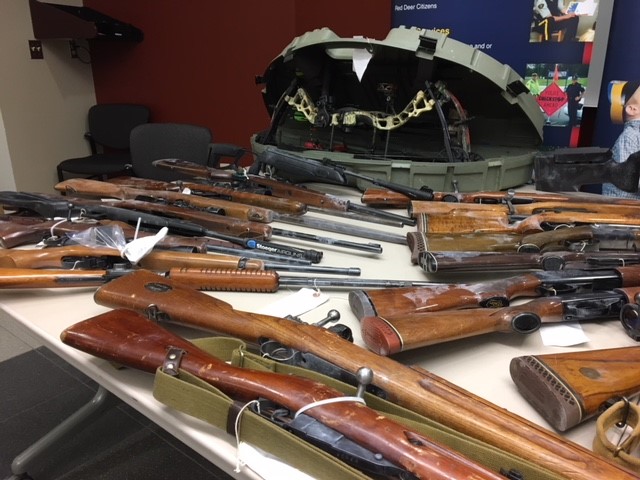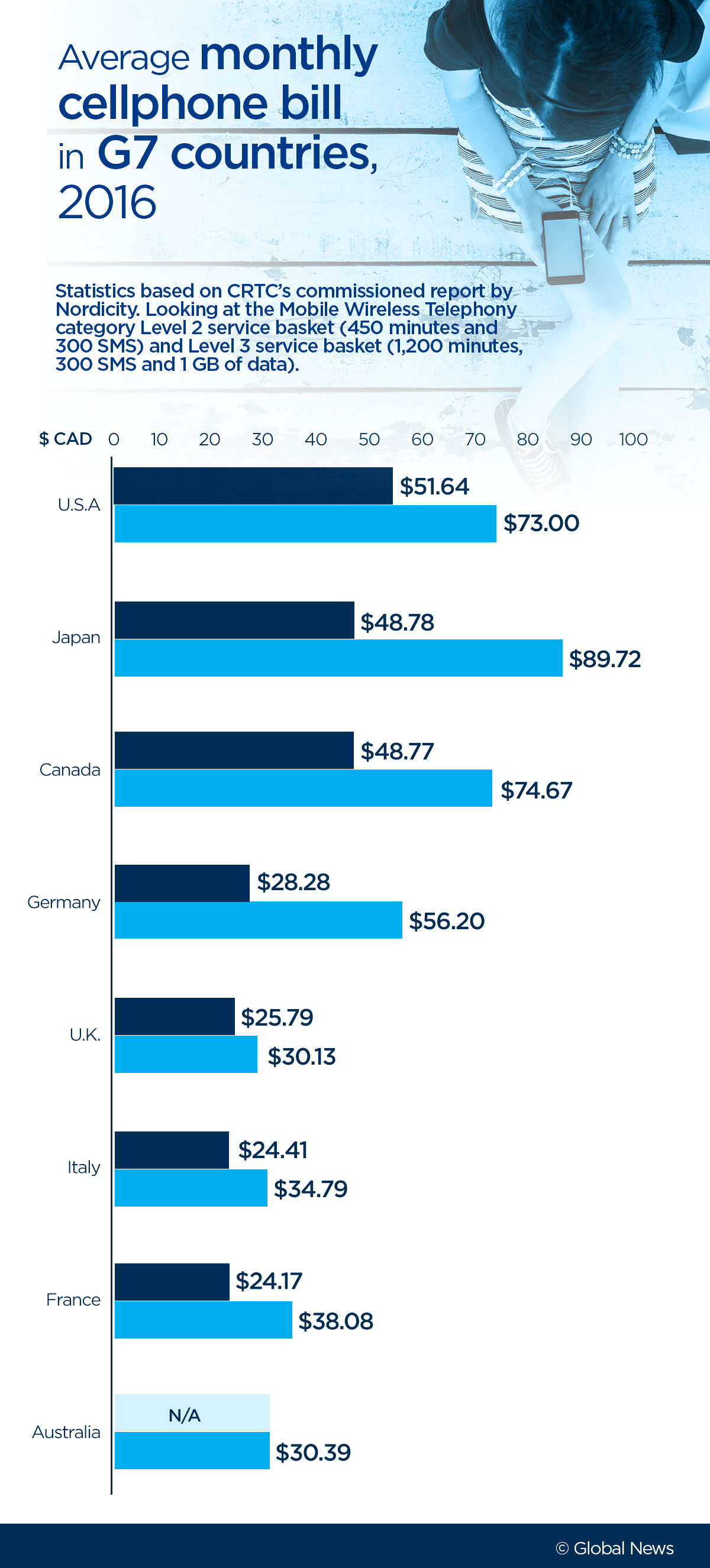Red Deer, Alta., is a city of just over 100,000 people, located about halfway between Calgary and Edmonton along the Queen Elizabeth II Highway.

Ask the police superintendent to describe the place, and he’ll tell you it’s a “boom-and-bust” type of area that takes in large numbers of workers from across Canada when times are good — and endures their problems when times turn bad.
Most are young men, the superintendent said, a demographic that commits more crimes than any other.
This, combined with its location and boom-bust economy, represents one reason why Red Deer just recorded the most severe crime levels of any Canadian city with a population over 100,000 in more than a decade last year.
This chart shows crime severity indices (CSI) in five Canadian cities between 2013 and 2017:
- Court in Ontario city struggling with gun crime closes over safety fears
- Sonya Massey: Deputy charged in fatal shooting worked for 6 agencies in 4 years
- Defence seeking six-year sentence for former fashion tycoon Peter Nygard
- Sonya Massey: Bodycam shows Illinois deputy shooting Black woman in her home
Last week, Statistics Canada released its police-reported crime statistics for 2017. The report showed that Red Deer’s RCMP detachment recorded a crime severity index (CSI) of 221.56, more than any police department in a major Canadian city last year or any year going back to 2006.
The CSI is a tool that measures police-reported crime across Canada. It takes violations reported by police detachments, assigns them different weights based on their severity, adds the weighted offences together and then divides them by that community’s total population.
The index is standardized to 100 in Canada, similar to the Consumer Price Index, and uses 2006 as a base year.
However, the CSI doesn’t necessarily capture most of the crime that’s happening in a city. Statistics Canada’s 2014 General Social Survey on Victimization showed that less than 31 per cent of violent and nonviolent incidents were reported to police that year.
In Statistics Canada’s index, crime severity isn’t calculated by community but by police department. In some communities, police are divided into municipal and rural detachments, which is often the case for the RCMP.
For Red Deer, Statistics Canada only has data on its municipal RCMP detachment.
READ MORE: Crime severity up in Alberta; rural crime also up: Statistics Canada
Still, the city is no stranger to high crime levels. Data shows that its CSI has gone up every year since 2013, and Red Deer has ranked first every year since 2011 among detachments in Canadian cities with 100,000 people or more.
In 2017, Red Deer’s municipal police department ranked above the Saskatoon municipal police, which had a CSI of 126.62; the Edmonton municipal police with a CSI of 124.17; the Regina municipal police with 116.99; and the Winnipeg municipal police with 111.92.
However, these numbers don’t tell the whole story. Red Deer doesn’t have the highest crime severity in Canada; that would be North Battleford, Sask., which recorded a CSI of 371.58, the highest among communities with 10,000 people or more.

Red Deer ranked sixth according to that metric.

Get breaking National news
But a city’s overall score doesn’t exactly provide insight into how dangerous that community is. In Red Deer’s case, its CSI score was largely driven by property crime.
When it came to the severity of violent crime, the city ranked behind Winnipeg.
This chart shows which violations drove Red Deer’s CSI, by percentage:
Of the top 15 violations that contributed to Red Deer’s CSI, breaking and entering made up the greatest share with 22.3 per cent.
Weighted at a score of 211, there were 1,463 break-and-enter incidents in 2017.
This was followed by motor vehicle theft, which made up a 7.8 per cent share of the CSI, and mischief, which contributed 7.3 per cent.
By other metrics, Red Deer ranks very high when it comes to property crime among communities with over 100,000 people.
In 2017, Red Deer ranked first among cities with a population of 100,000 or more on numerous violations, including breaking and entering, motor vehicle theft, fraud and weapons possession.
Why the high crime rate?
So why the high crime rates and crime severity?
Red Deer RCMP Supt. Ken Foster cited a number of reasons, including geography.
“We’re jammed between Edmonton and Calgary, and we are the third hub of Alberta and service a large area with major transportation areas,” he told Global News.
The other is the community’s demographics, which he said are tied to an economy driven by oilfield activity and oil services.
“When it’s booming, it attracts a large number of workers from all across Canada and, in fact, other parts of the world. We see spikes in population growth, and a lot of that population growth is a young male population,” Foster said.
“Statistically, young males commit more crimes than any other demographic,” he added.
READ MORE: Regina still has one of the highest crime rates in Canada, but numbers are trending down
When the economy slows down, it can hit hard for the people who became accustomed to a lifestyle fueled by making lots of money in the oilsands, said Foster.
It can also take a toll on drug users and people with addiction issues. “Addictions don’t get a pink slip,” he noted.
Red Deer was hit “probably the hardest” of almost any community in Alberta by the recent dip in oil prices. Crime severity went up after that happened, much as it did with the 2008 recession.
Add to that an opioid crisis, and it becomes a “perfect storm,” Foster said.
This chart shows how Red Deer’s CSI (the red line) trended before and after the 2008 recession, relative to other cities*:
*The chart above excluded Halifax due to a change in how crime severity was accounted for in the city between 2007 and 2008.
Red Deer ranked well out of the top five in 2006 and 2007, hitting 15th and 16th in those years, respectively.
However, that changed after the 2008 recession, as the city hit sixth place in 2009 and second place in 2010.
In subsequent years, the community’s CSI has only continued to grow; there were particular spikes in crime after oil prices dropped in 2014.
An uptick in crime can also be observed for the Edmonton police jurisdiction, going from 94.22 in 2013 to 124.77 in 2017.
This chart shows how crime severity trended in various Canadian cities around the drop in the price of oil in 2014*:
*The chart above dropped Vancouver because the CSI dropped there, relative to other communities, while it increased in Edmonton.
There’s plenty of credibility to the idea that economic downturns can influence crime levels, said Amanda McCormick, director of the School of Criminology and Criminal Justice at the University of the Fraser Valley.
“When people are facing a loss of income, that creates stress, and stress can directly result in violence against others,” she said.
Stress isn’t the only result of a slowing economy, McCormick added.
“When you have a downturn in the economy, people are paying less taxes, and when less money is coming into a community, resources may be cut,” she said.
“As a result, the programs people need to help them deal with their stress may not be available to them when they most need them.”
READ MORE: Saskatchewan had highest violent crime rates in 2016 — Statistics Canada
Property crime levels can be heavily influenced by a city’s population of prolific offenders, McCormick added.
The Red Deer RCMP know this — and have taken action.
In April 2016, Red Deer police launched “Project Pinpoint,” a crime-reduction strategy that used comprehensive analytics to look at specific violations that were driving crime levels.
The project helped police come up with data showing where crimes were happening, the time of day they were occurring and who was likely committing them based on a number of factors.
“We target those crime hotspots. We target those people we know are committing an inordinate amount of crime, and we do checks,” Foster said.
The project has involved “really holding prolific offenders accountable and really flooding those areas where we see crime spots in.”
Police are reporting clear results, too. A release from the City of Red Deer for the second quarter of this year showed crime stats continuing to show “steep decreases in property crime totals and significant decreases in person’ crimes when compared to the same period in 2017.”
There were 760 break-and-enter incidents by this time last year; that number is down to 552 this year.
Fraud and theft of motor vehicles have also seen a decline.
Some crime moves to other areas of the city, Foster admitted. But when police target prolific offenders, “there’s less people doing the crime,” he said.
“I am completely convinced and satisfied that the course we are on, and the measures we have taken since April 2016, are the right steps and measures,” Foster said.
But there remain factors that may contribute to crime in the city, most of which are outside the police’s mandate.
“Solve addictions, solve homelessness, solve the mental health issue and you’ll take care of a lot of the crime you’re dealing with,” he said.
More treatment facilities and access to services would help, but that’s a “massive social challenge, and not simply related to Canada by any means,” Foster said.










Comments